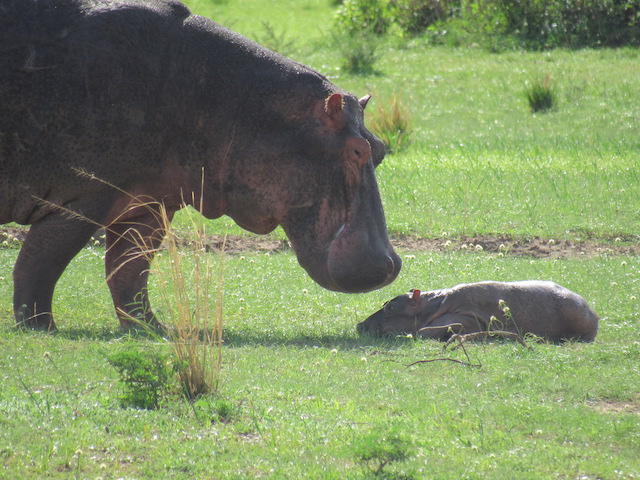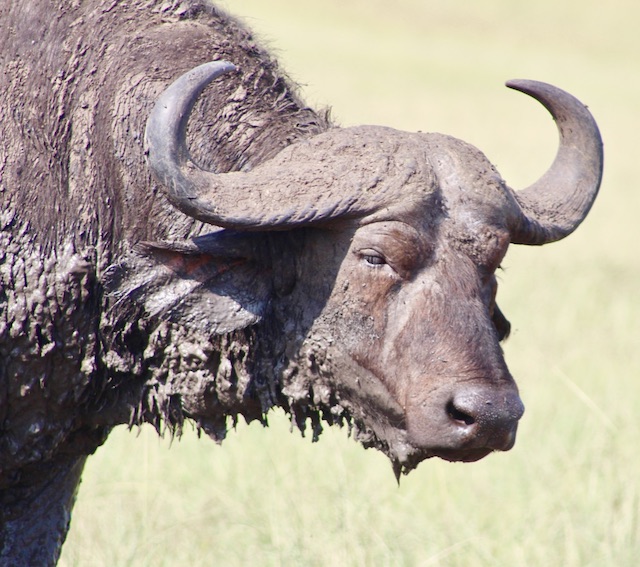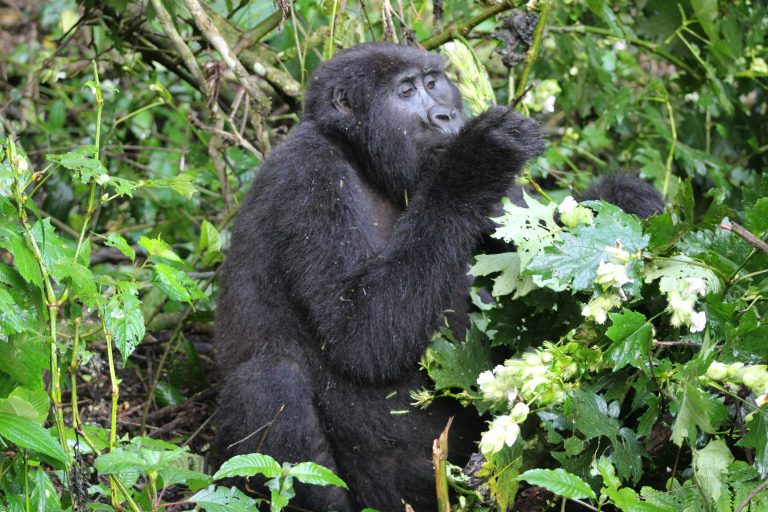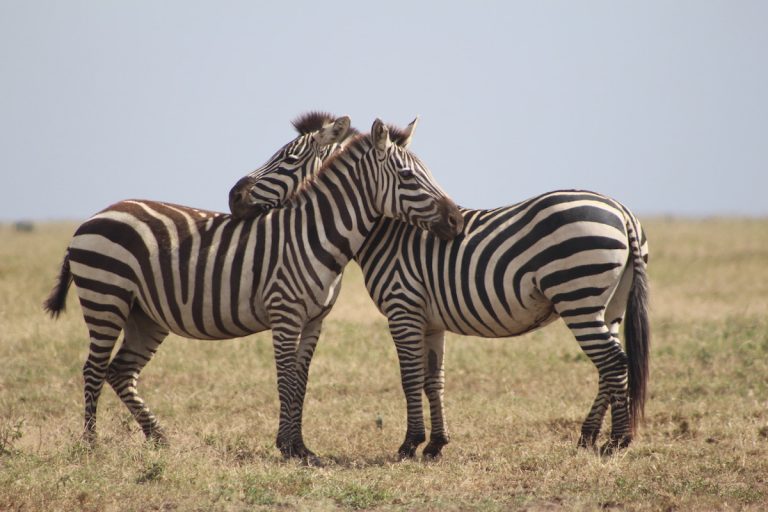Serengeti National Park is Tanzania’s largest and most spectacular national park, popularly known for hosting the great wildebeest migration. Located in Northern Tanzania, the park is part of the Tanzania Northern Safari Circuit which includes Ngorongoro Conservation Area, Tarangire and Lake Manyara National Park. It was created as a game reserve and later as a national park. Serengeti encompasses a total area of over 30,000 square kilometers including numerous additional game reserves. However, the national park itself is 14,750 square kilometers and it runs parallel to Kenya’s Masai Mara National Reserve; thus, the Mara-Serengeti Eco System.
“Serengeti” is a native Masai phrase that means, “the location where land extends until further notice,” thus the park is also known as the place with “endless plains.” The park’s endless plains encompass grassland, savanna, riverine forest, and forests and though the park is mostly open plains, it sits at an elevation between 914m to 1,828m above sea level. The remarkable high rock scenery conjures up images of the film “Lion King.”
Famous for its wealth and high biodiversity, Serengeti National Park is home to a plethora of wildlife species. The park is home to all the African Big 5 (lion, rhino, buffalo, elephant, and leopard), including the largest population of lions in Africa. Aside from the big five, Serengeti also boasts a variety of predators including the cheetah, jackals, hyena, jackals, African golden wolf, honey badger, serval, and so on. Because of the expansive nature of its environment, Serengeti offers the best opportunities of seeing predators on any African safari. Other animals in Serengeti include wildebeest, Grant’s gazelles, zebras, antelopes, hippos, crocodiles, impala, kongoni, eland, topi, hartebeests, and giraffes to mention but a few.
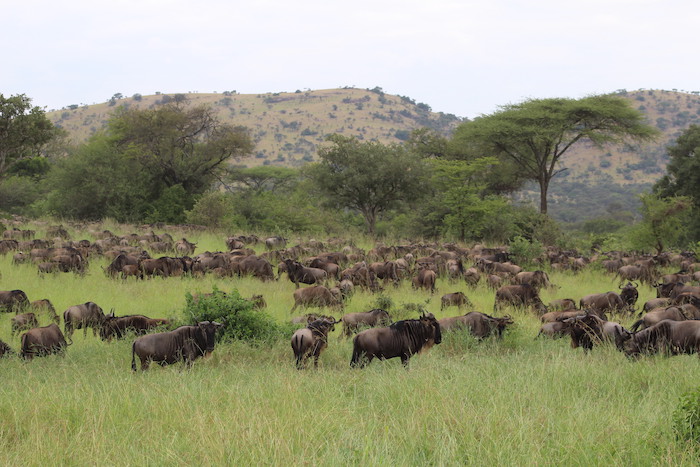
Furthermore, Serengeti National Park is a birdwatcher’s haven, home to over 500 recorded bird species. Birdwatchers on birding safaris in the park will gladly enjoy exploring all of the area’s unusual species, such as the Kori Bustard – Africa’s heaviest bird and the Vivid green and yellow Fischer’s Lovebirds, among others. In general, the Serengeti-Mara ecosystem is one of Africa’s Endemic Bird Areas and it is home to five unique bird species, half of which are found only in Tanzania.
Attractions in Serengeti National Park
The Great Wildebeest Migration
The Great Wildebeest Migration is Serengeti’s prime tourist attraction and the world’s greatest undisturbed animal migration, as well as the apex wildlife spectacle in Africa. This migration is the world’s second-greatest terrestrial animal migration, making it one of Africa’s seven natural marvels as well as one of the world’s 10 natural travel wonders.
The migration includes over 1.5 million wildebeest, 250,000 zebra, 500,000 gazelles, and tens of thousands of topi, hartebeest, and impala participating in the journey for water and greener pastures. Every year from late January to October, millions of these angulates migrate through the Serengeti, crossing the Grumeti and Mara rivers before landing in Kenya’s Masai Mara National Reserve. The ungulates travel across the environment in a seasonal rhythm determined by rainfall and grass nutrients during this vast cyclical migration. And while visiting Serengeti, these vast herds of animals on the move are better encountered along the Grumeti river. Moreover, some of the most iconic photographs of the wildebeest migration have been captured along the Grumeti and Mara rivers.
Experiencing the Great Wildebeest Migration is like watching a movie as it is not just about the angulates; during this time, the animals are not only at risk of being carried away by the raging rivers but also of being attacked by predators such as crocodiles under the water and by lions and leopards above the plains who wait for them eagerly to pass. It’s a risky voyage, but it’s also one of nature’s most amazing migratory phenomena.
Wildlife
The sheer density of animals in Serengeti National Park is what draws most visitors from all over the globe to Serengeti safaris. The presence of huge mammals such as elephants, buffaloes, and hippos, a big cat population including cheetahs, leopards, lions, and serval cats, makes a safari in Serengeti a memorable one. Serengeti National Park boasts the highest concentration of large mammals in the world, with a very high chance of spotting various animal species such as herds of elephants, giraffes, zebras, wildebeests, zebras, hippos, lions, buffalos, leopards, rare to see rhinos, especially in the park’s northern part. Furthermore, Serengeti National Park has a population of over 3000 lions.
Birds
Popularly known as the “Little Birding Paradise,” Serengeti National Park is home to over 500 bird species dispersed over its open wide unending plains. Given the vastness of the park, birders need extended time on Serengeti birding expeditions to gain the greatest results. Birds are among the most popular sights in the Serengeti National Park and aside from some classic species like the Kori bustard, African Fish Eagle, and Ostrich, birders can look out for; Grey-throated spurfowl, Rufous-tailed weaver, Schalow’s wheatear, Grey-crested helmet shrike, Red-throated tit, Schalow’s turaco, Secretary bird, and Fischer’s Lovebird, among others.
Birding expeditions in Serengeti are most enjoyable during the green season when the birds are nesting. During this season, the park also hosts migrating birds from all over the world from April to November.
The Retina Hippo Pool
This is one of the water catchment spots in the park, with hippos as the primary inhabitants. The Retina hippo pool is one of the major tourist attractions in Serengeti and it is a must-see for travelers to the park. Infested with a variety of hippos, the pool offers incredible and up-close views of hippos with their entire bodies exposed. They are in vast numbers in the tiny pool of water and you can find them relaxing as they continue to sway their tails to splash water on their backs. There are several hippo pools in Serengeti but the most popular is the Retina Hippo Pool which boasts the most variety.
Moru Kopjes
Kopjes are picturesque rock formations in the Serengeti National Park’s central region, where the River Mbalageti valley begins. Offering breathtaking views, the kopjes are made of aged granite that has cracked and eroded owing to exposure to the sun, rain, and wind. Because of their size, the Moru kopjes are the most outstanding and beautiful, and they provide shade and small water pools for animals. More so, they attract a wide range of animals such as zebras, elephants, wildebeest, lions, leopards, cheetahs, serval, caracal, etc., making them the best place for game viewing during your safari in Serengeti national park. Other primary groupings of kopjes in the Park include Gol, Barafu, Wogakurya, Maasai, Loliondo, and Simba.
The Maasai People
The Maasai are among the few earthly people who have kept their culture alive even as civilization sweeps the globe. These were the original inhabitants of the area. Following the gazette, the Maasai were evacuated to the Ngorongoro Conservation Area; however, after a long run, they reclaimed some Serengeti territory. The Maasai offer travelers one of the most authentic cultural experiences on African safaris to the Park. Their ancient traditions are rather interesting, and it is worthwhile to visit them. Some of the lodges have hired native Maasai people to offer guard and watchman duties among others.
Seronera River Valley
The River valley is one of the best places in Serengeti National park for wildlife viewing. Situated in the central part of the park, the river valley thrives with a variety of animals such as buffaloes, topi, impala, giraffes, hartebeest, warthogs, waterbucks, bushbucks, hippos, reedbucks, dik-dik, Nile crocodiles, and predators such as lions, spotted hyenas, leopards, cheetahs, etc. In addition, Seronera River is also a fantastic area for bird viewing, where you may see herons, fish eagles, rollers, kingfishers, egrets, hoopoes, grey crowned cranes, and Egyptian geese among other things.
Grumeti River
The Grumeti River is an intriguing place in Serengeti National Park’s distant western corridor. The river is well-known for harboring plenty of crocodiles and it is the first crossing point for the great wildebeest migrants. This is where over one million wildebeest, thousands of gazelle, zebras, and other antelopes get to overcome their first struggle for survival. During May and July, animals will cross the Grumeti River, allowing travelers to see an incredible sight on their safari.
Top Activities in Serengeti National Park
Game Drives
Game drives are and have always been the best way to view wildlife while on any safari in Africa; and given the vast expanse of Serengeti and its rich density of wildlife, game drives in this remarkable park are the best. Serengeti National Park offers game drives in sessions that are morning and afternoon/evening drives. The morning game drives start as early as 06:00 a.m. are the most rewarding as most of the Serengeti’s species are most active in the cooler morning and evening hours. Riding in the comfort of a 4×4 safari vehicle, a sunrise game drive is ideal for spotting predators such as leopards, lions, cheetahs, hyenas etc. It is also the best time to catch the angulates, buffaloes, elephants, and other grazers grazing in the open savannah plains. In most cases, morning game drives in Serengeti last up to 4 hours and often end with a bush breakfast or travelers can choose to head back to the lodge. A morning game drive is an energizing way to start your day and you don’t need anything besides maybe binoculars and a coat.
Whereas morning game drives are the best time to catch wildlife active, afternoon game drives provide remarkable vistas of wild animals relaxing in the shade and quenching their thirst by the water catchment areas. Night game drives in Serengeti on the other hand, are not permitted, like in any other national park in Tanzania. However, these are feasible in the nearby conservancies.
Hot Air Balloon Safaris
If you want to explore the spectacular Serengeti terrain and grasslands in awe, take to the skies with a hot air balloon excursion. A dawn hot-air balloon tour over the Serengeti plains is one of the highlights of a luxury safari to the Serengeti, giving you a bird’s eye perspective of the whole park. The balloon flights start from Northern Tanzania and take around an hour after which are followed by a Champagne bush brunch. Hot-air balloon safaris in the park starting as early as 5:00 a.m. with a brief cup of coffee at your lodge. During the balloon safari, you will see a variety of wildlife, particularly nocturnal creatures: and as it clocks sunrise, hippos and other wildlife may be seen in the vicinity of the rivers Seronera and Grumeti.
Safari Walks/ Nature Walks
This is also another way of viewing wildlife in Serengeti National Park. Safari walks are exciting because they offer the most spectacular up-close and personal encounters with wildlife. During the guided walking safari in the reserve, travelers ought to immerse themselves in the utmost natural splendors of the Serengeti plains. Discover the stunning scenery of Serengeti National Park as your guide helps to point out animals, intriguing insects, and beneficial plants to the community. Be prepared to see the Serengeti’s gorgeous creatures on the move, including cheetahs, elephants, buffaloes, lions, and giraffes, to mention but a few. Safari walks in the Serengeti are conducted by the local Masai guides and park rangers and can last up to an hour and a half.
When to go to Serengeti National Park
Africa safaris to Serengeti National Park are good all year round; nonetheless, the ideal months to visit the park are from June to October during the dry season when wildlife viewing is finest. Wildlife viewing is fantastic all year, but some sites are better during certain seasons. However, the wildebeest migration is all year round as they are in different locations depending on the months. The wildebeest calving season is from late January to February in the Ndutu area of Serengeti and Ngorongoro Conservation Area.
How to Get to Serengeti National Park
The majority of Serengeti safaris depart from Arusha and Serengeti National Park can be accessed both by road and air. The best way to get there though is to fly into Kilimanjaro International Airport (JRO), which is roughly 46 km from Arusha. From Julius Nyerere International Airport (DAR), which is located outside of Dar es Salaam, you can either fly to Arusha Airport (ARK) or Kilimanjaro International Airport (KLI) (JRO). Arusha has daily charter flights to numerous airstrips within the park.
If you are traveling by road, the trip to Serengeti is around 382km and will take approximately 7 hours from Arusha. The journey is long and rough, but it’s fulfilling with fantastic views en route, and you’ll see some animals along the way. Because the journey takes you via the Ngorongoro Conservation Area, you can choose to fly one way and drive the other way or even have an overnight stay at the Ngorongoro Crater. The distance from the crater to the Seronera region in the Serengeti is around 140km which is approximately a 3 hours’ drive.
Accommodation in Serengeti National Park
- Serengeti Serena Safari Lodge
- Mbalageti Serengeti
- Seronera Wildlife Lodge
- Nyikani Camp
- Lobo Wildlife Lodge
- Lamai Serengeti
- Serengeti Bushtops Luxury Camp
- Serengeti Simba Lodge
- Grumeti Migration Camp
- Ikoma Tented Camp
- Serengeti Wildebeest Camp


